A few years ago my cousin passed her father’s Retina IIc on to me including a lens hood, a couple of filters and a 1958 copy of The Retina Way by O. R. Croy. This informative book covers all the Retinas and the accessory system from 1934 with guidance on using everything.
I have used the camera on and off after having it CLA’d to iron out its problems. This was carried out by Chris Sherlock, who put the camera back into perfect order. It is featured in one of his excellent videos that can be accessed via his web page (https://retinarescue.com).
May I say here, and echoed by many other photographers around the world I am sure, how much I valued the skill and extensive knowledge that Chris brought to give old equipment a new life. His recent retirement is a great loss to film photographers. Such skills as his are an essential and greatly appreciated component of what gives so much pleasure to so many. And his web site continues to be an invaluable resource.
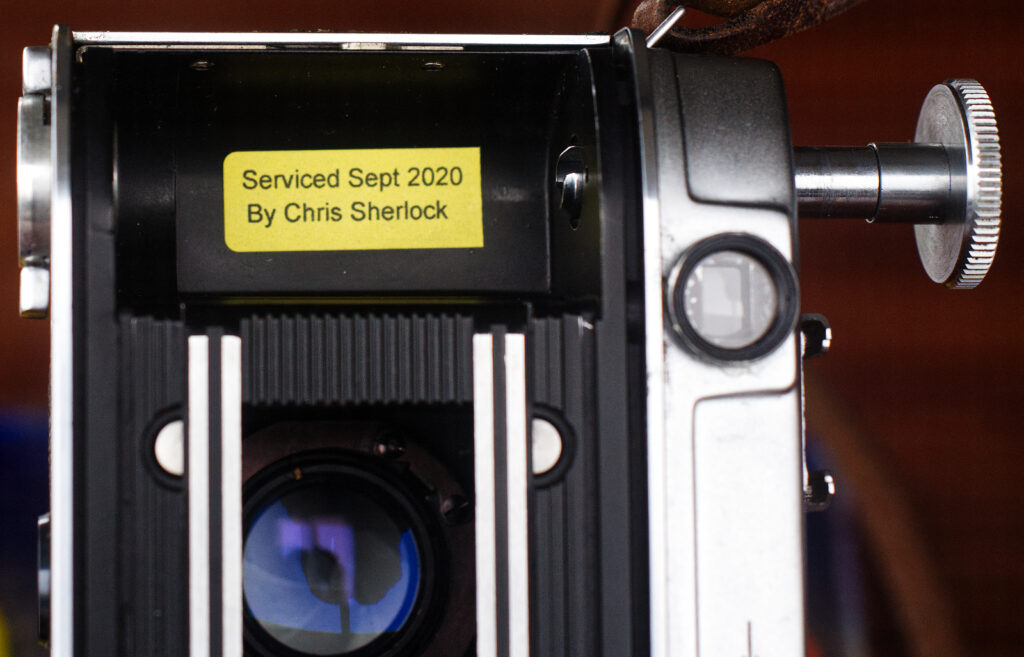
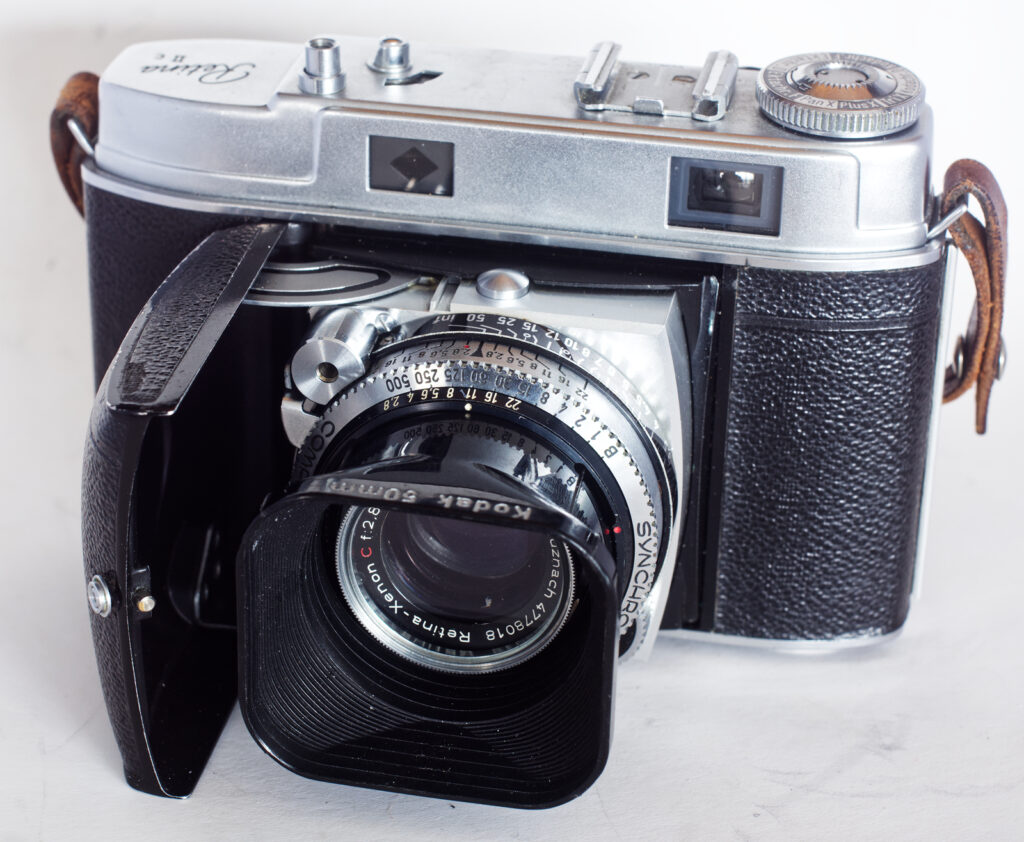
The Retina IIc in brief
I will just give a brief description of the camera here as it has been reviewed so many times already.
This Retina had been bought new by my uncle in 1958 when it was sold in the UK at a retail price of £59.1.6 inc. tax and import duties so it was no small investment. A divorce was avoided, I believe, as it was bought in the Channel Islands at the more reasonable tax and duty free price of £28.10.0, my aunt and uncle having moved there after WWII. To put the cost into perspective, my bedsit whilst at university at that time, cost me £3.10.0 per week. So the UK retail price would have kept me housed for around four and a half months! The tax and import duty free price would have kept the roof over my head for 10 weeks or most of one term.
The model IIc is a high quality, folding 35mm coupled rangefinder camera with an f2.8 6-element, convertible lens. It was made by the firm originally established by August Nagel, who had been producing quality equipment for some time and had been bought out by Kodak in the 1920s. The IIc made use of a Synchro Compur shutter with a lens having interchangeable front components for wide angle and telephoto options. Lenses were made by Schneider and Rodenstock but the interchangeable front components cannot be mixed, mounts being incompatible I believe. Apart from a base mounted lever wind and offset tripod socket, layout is generally conventional.
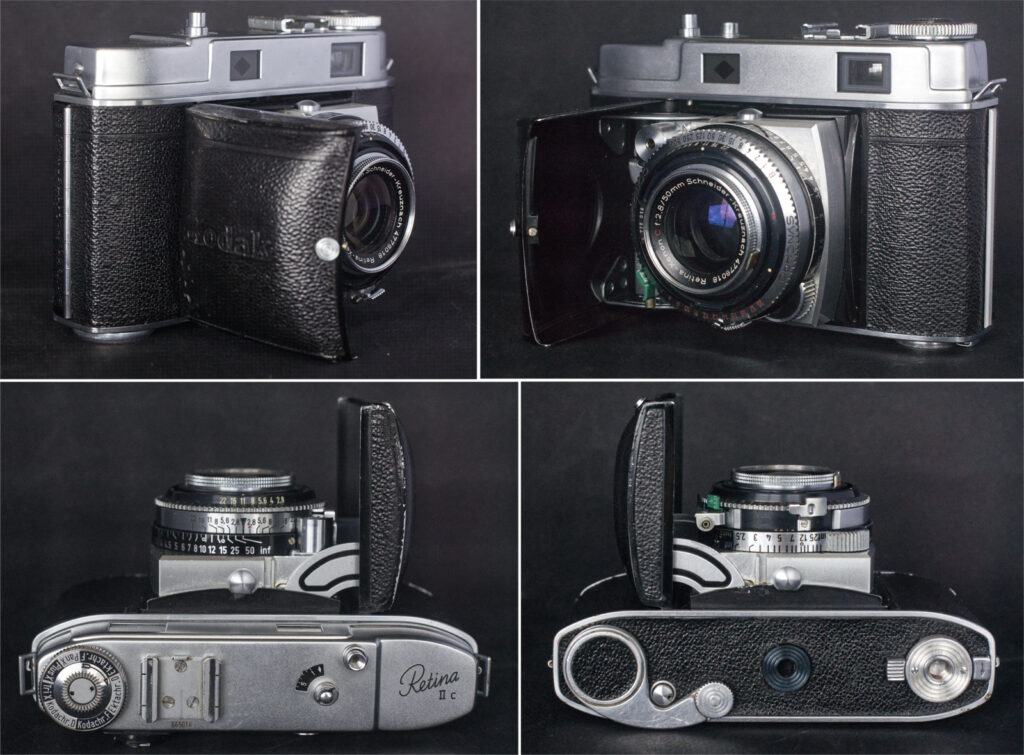
There was a similar IIIc model which included a built in selenium exposure meter and an f2 maximum aperture. The later ‘II and III big C’ models had minor improvements, mainly an improved and enlarged viewfinder which had 35mm and 80mm frame lines incorporated removing the need for accessory finders for these accessory lenses. The model I versions were viewfinder cameras with manual focus.
Studying the accessories has explained why the camera’s tripod socket is offset to one end rather than central. The camera platform used with a some of the close-up accessories screws into it and the unthreaded socket where the tripod fixing would normally be takes a peg to locate the platform on the camera. The platform incorporates a tripod socket located on the lens axis where it is most useful for the tripod work several of these accessories made essential.
The accessory range
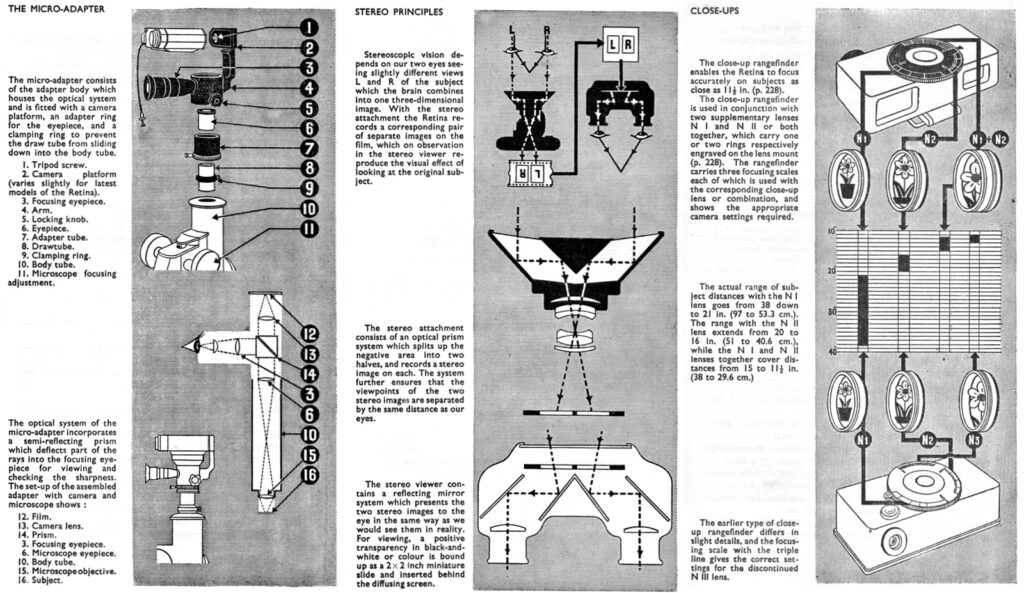
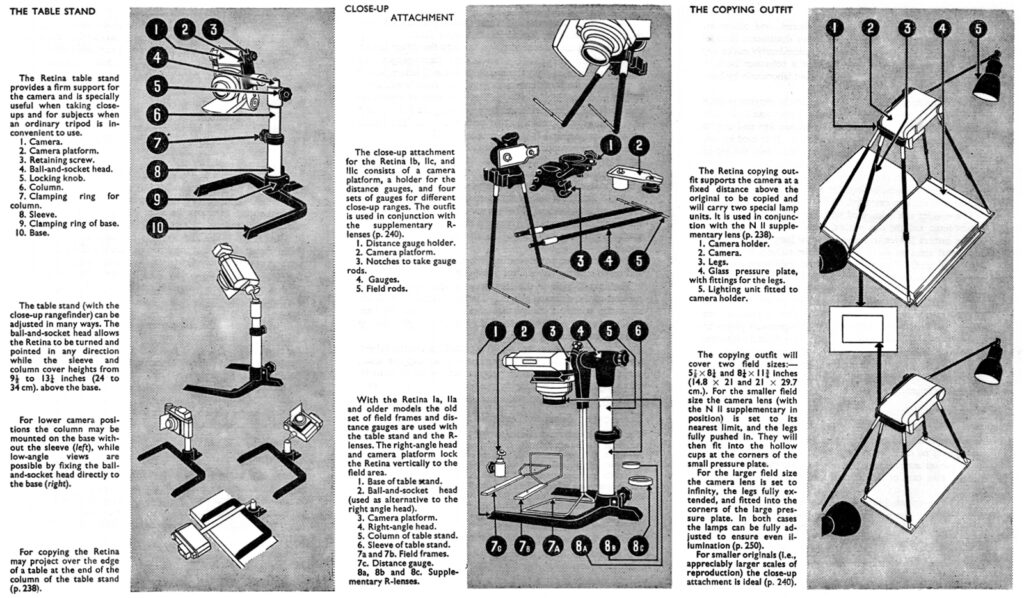
The Retina Way describes the comprehensive range of accessories then available, developed over time into possibly the most comprehensive system for this type of camera being in competition as it was with Leica and Contax in particular. These extensive back-up systems allowed the user to do as much as they needed with the equipment available.
The system includes the usual range of filters and a lens hood for the standard and wide angle lenses, as well as more specialised devices for flash, close-up, copying, microscopy, and stereo. An adjustable multiple finder covering the available focal lengths was available and two frame finders, one for the standard 50mm lens only and a second like mine that has masks for the 80mm tele. All these finders have parallax adjustment.
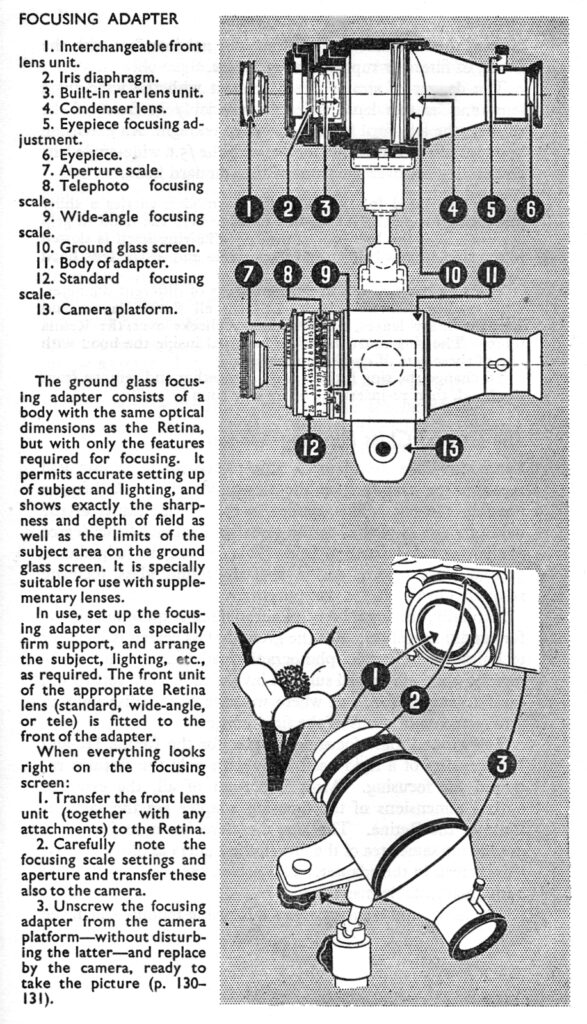
The Ground Glass Focussing Adapter was perhaps the most extreme and expensive item. Effectively a camera without the front lens component, shutter or film transport system and a ground glass screen in the focal plane with a magnifier, an accurate through the lens framing and focussing method with any lens or close up combination. It was supported on the tripod mounted camera platform, the camera and front component replacing the adapter on the platform to make the exposure after framing up and focussing, the settings transferred to the camera manually. Cumbersome but very precise and unlike the reflex attachments of other manufacturers infinity focus was possible with all available lens combinations as standard.
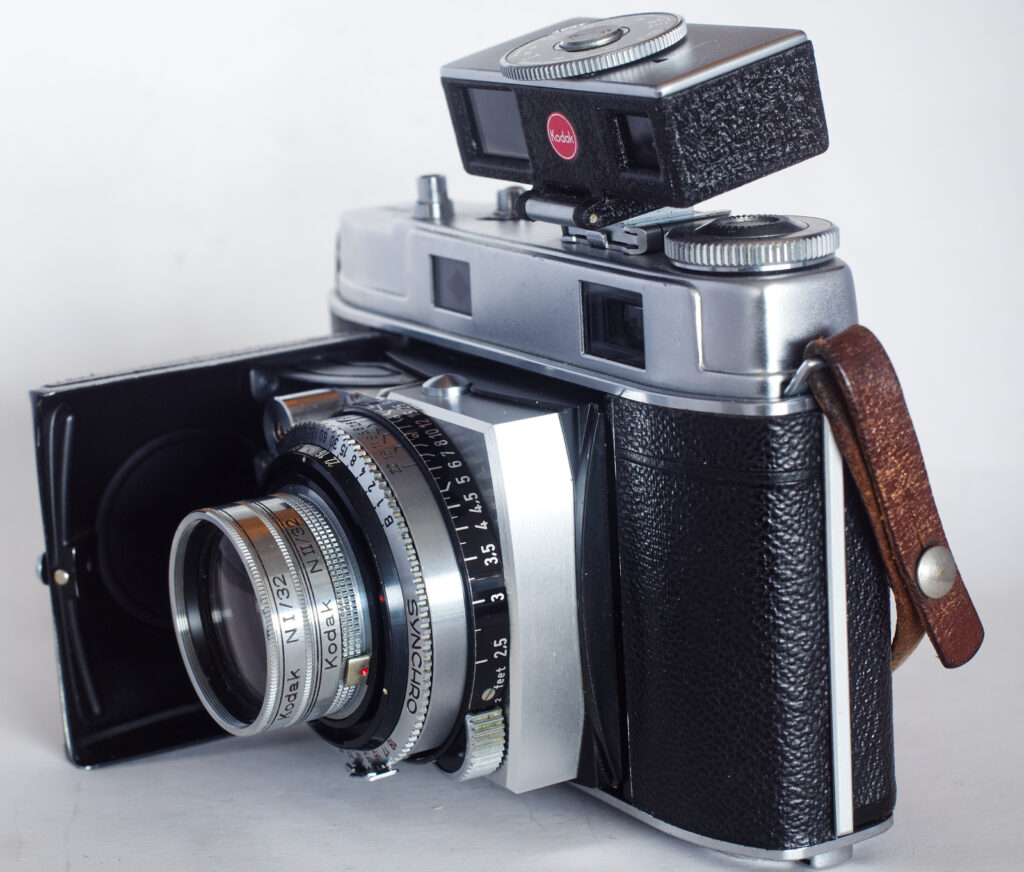
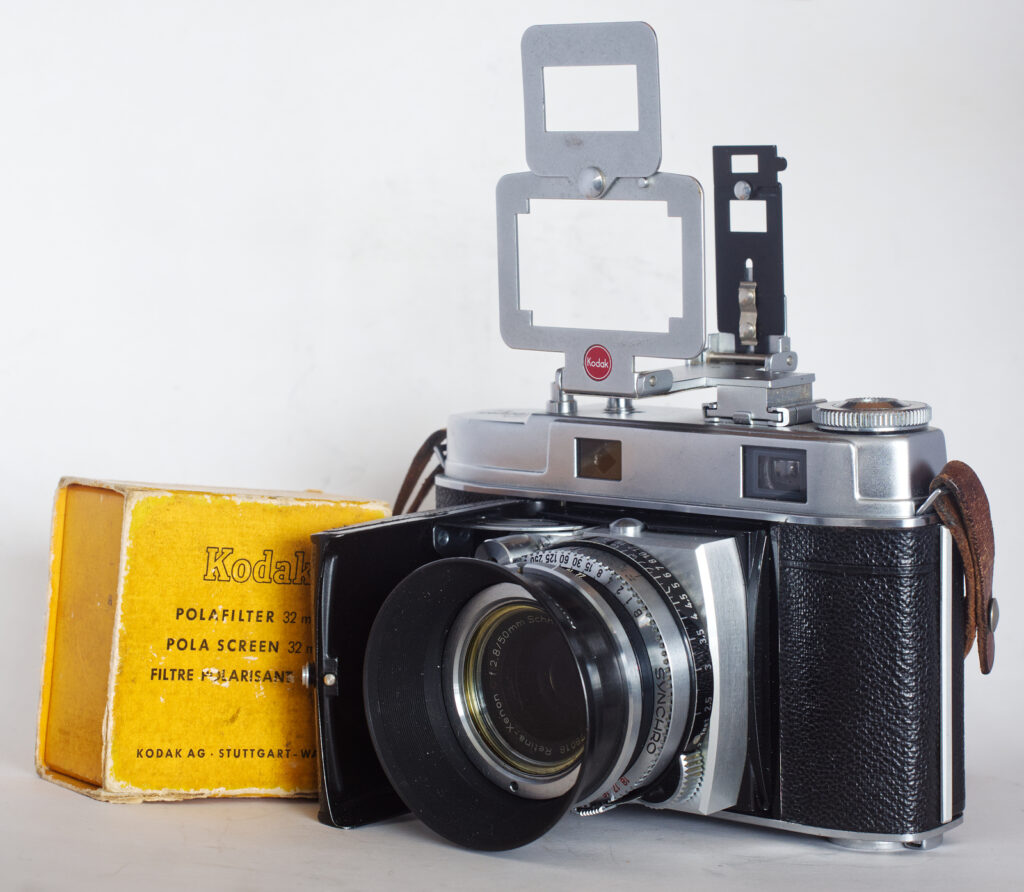
My accumulation
I didn’t set out to collect extra bits for the Retina but over time I have acquired a few out of curiosity as they came up for sale. These are:-
Original 50mm lens hood, yellow and UV filters by Kodak that came with the camera.
A Voigtländer filter I modified as an IR R720 filter.
Type C frame finder (with 80mm mask).
Close-up rangefinder set.
Polarising filter.
The filters and lens hood have seen the most use of course but I have played with the others a little while many of the accessories I have never come across to be able to try them out.
Probably the most useful of the ones I have are the close-up set and the polariser, though the secondary image of the cu rangefinder is very faint. The frame finder would probably come into its own if the 80mm lens was available. For more comfortable viewing I generally use a Voigtländer Kontur finder in combination with the coupled rangefinder for determining focus which works very well for me as a spectacle wearer. I am also on the lookout for the close-up attachment with the adjustable rods. I can see this being useful with the supplementary lenses I already own.
Some examples
Using this camera with a few of its accessories really shows what an impact electronics and the subsequent digital age has had on the photographer. Ansel Adams wrote a great deal about visualisation, i.e. having a clear idea in your mind of how you wanted the final image to come out before you take it. This was necessary because the actual result wouldn’t appear for some time in order to be assessed, only framing and composition could be manipulated visually prior to making the exposure. Now, the image can be previewed or reviewed immediately to assess the decisions we have taken, allowing a different approach by removing most of the technical aspects that previously required the photographer’s attention.
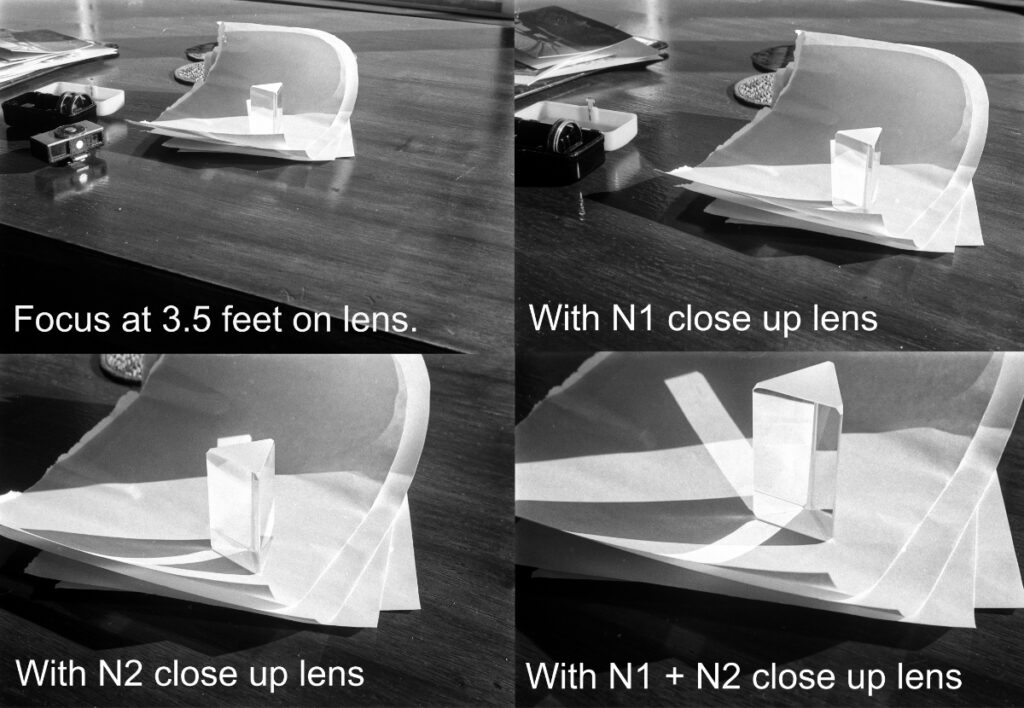
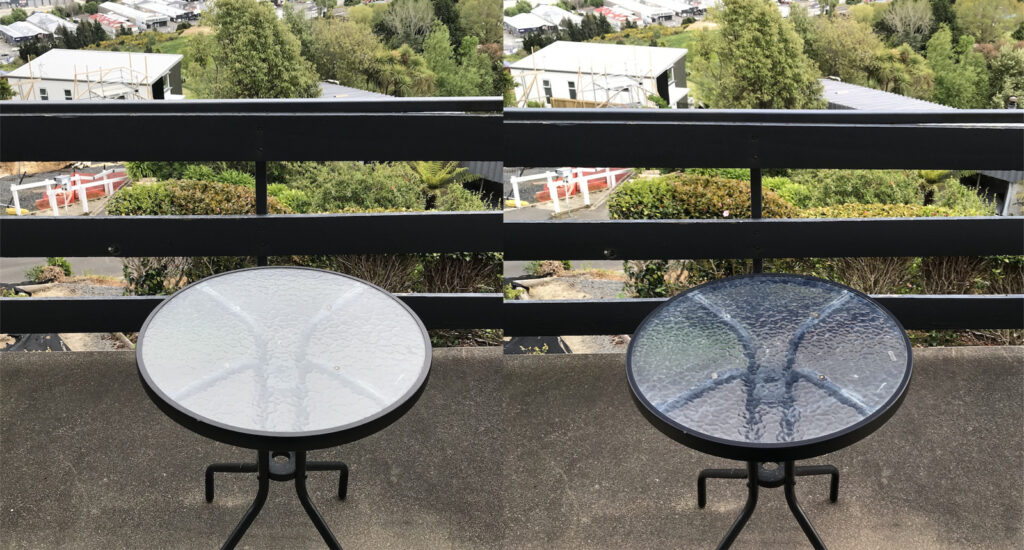
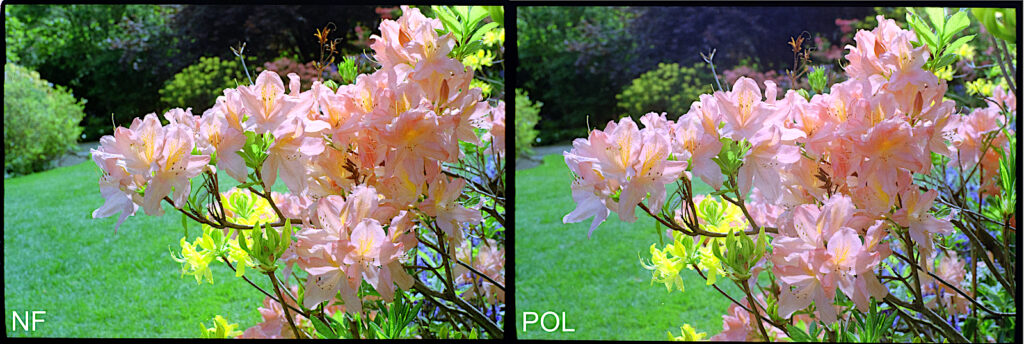
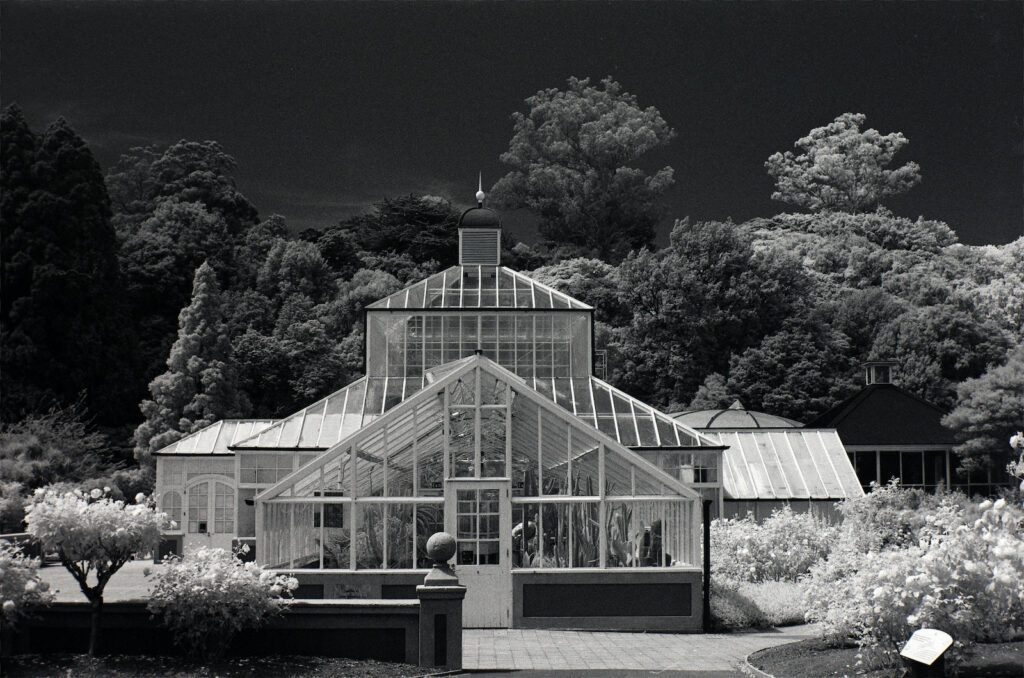
In conclusion
Apart from fixed lens types and mainly Leica of course, the coupled rangefinder was nearing the end of its popularity and general usefulness. The SLR was very much more convenient and adaptable, and the folding Retina was discontinued in 1961. The rigid models like the IIIS continued for a while alongside the Retina Reflex models but they were all discontinued by 1970. The more complicated operation of the leaf shutter was unable to compete with focal plane types for use in SLRs.
I suppose it is only reasonable to expect the design of any utilitarian item to develop for the benefit of its user and render some things obsolete in the process. Nevertheless, the Kodak Retina system is a good example of the skill and ingenuity of the designers to address the needs of photographers at the time this type of camera was a viable option. They had a definite attraction, being compact enough to slip into a pocket, unlike some. They are also precise and finely made and the accessories provided to extend their usefulness were suited to their purpose for quite some time when they were new and nowadays allow for a greater range of use for those of us who continue to enjoy them.
Unfortunately, the focal plane SLR and easily interchangeable lenses of greater choice of focal length won out and this type of camera had had its day.
Share this post:


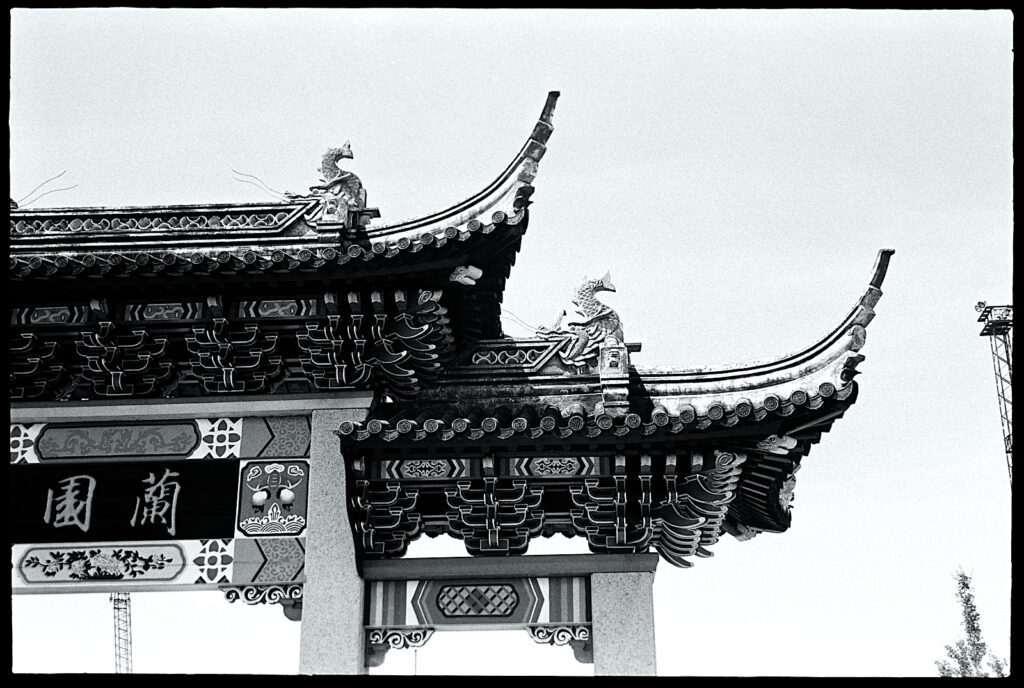
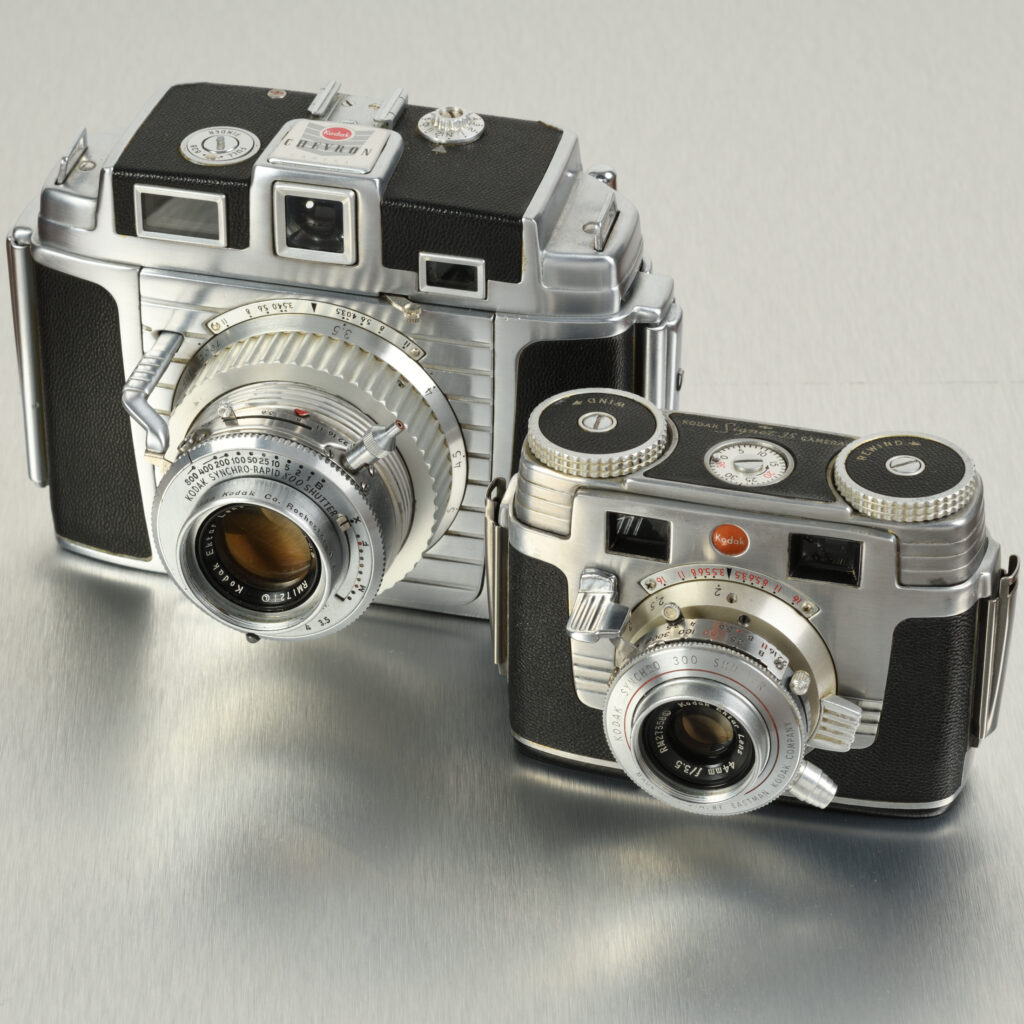
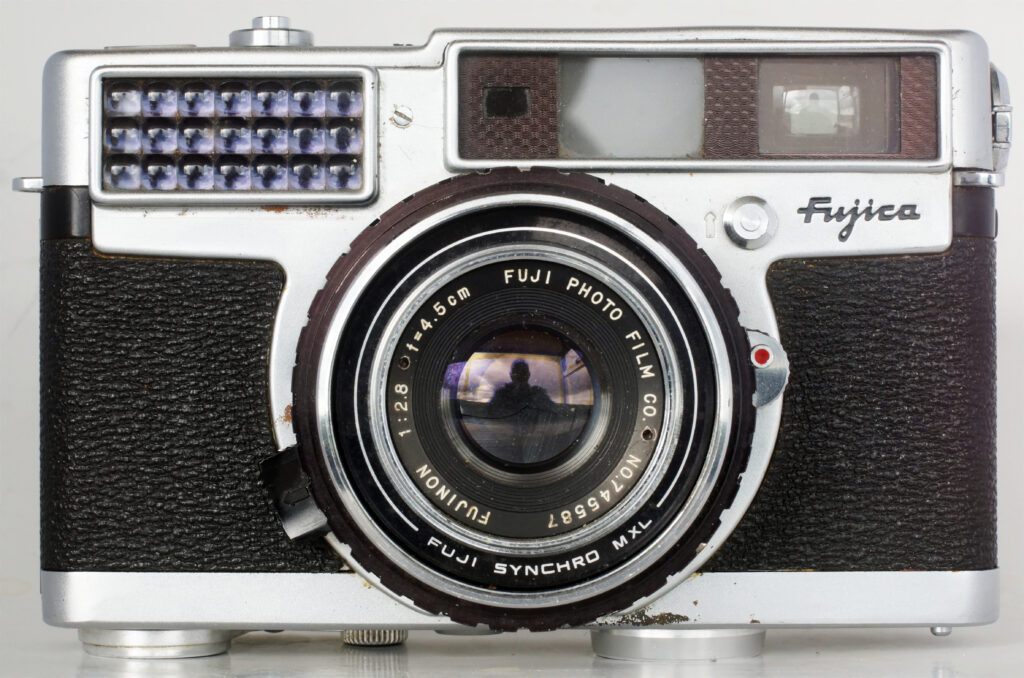




Comments
Ralph Turner on Retina IIc and the Kodak Retina system
Comment posted: 09/08/2024
Comment posted: 09/08/2024
Paul Trantow on Retina IIc and the Kodak Retina system
Comment posted: 09/08/2024
Everyone note: These are wicked good rangefinders will killer glass. They are tiny, focus close, and shoot sharp.
Comment posted: 09/08/2024
Jeffery Luhn on Retina IIc and the Kodak Retina system
Comment posted: 09/08/2024
Comment posted: 09/08/2024
Kodachromeguy on Retina IIc and the Kodak Retina system
Comment posted: 09/08/2024
Comment posted: 09/08/2024
David Kieltyka on Retina IIc and the Kodak Retina system
Comment posted: 09/08/2024
I have the Retina now and run a roll of film through it every so often. Still works fine.
Comment posted: 09/08/2024
Gary Smith on Retina IIc and the Kodak Retina system
Comment posted: 09/08/2024
https://realphotographersforum.com/threads/massive-classic-camera-auction-online-in-somerset-tomorrow.26341/
It certainly seems that you made out quite well with that gift of your uncle's gear Tony!
Comment posted: 09/08/2024
Jordan on Retina IIc and the Kodak Retina system
Comment posted: 09/08/2024
I had mine CLA'd in Christchurch at Fototech - though the website isn't active anymore. The camera came back pristine. I'm still not used to EV but am getting there.
If it didn't have such strong sentimental value I would totally take it traveling overseas
Comment posted: 09/08/2024
Julian Tanase on Retina IIc and the Kodak Retina system
Comment posted: 10/08/2024
Comment posted: 10/08/2024
Peter Roberts on Retina IIc and the Kodak Retina system
Comment posted: 10/08/2024
It comes at a fortunate time as funnily enough it was only last weekend that I at last got around to running a film through a Retinette 1B that has spent many years sitting untried in my display cabinet. I had no idea that it had such an illustrious heritage. I've a nagging feeling my efforts haven't done it justice but nontheless a "Five Frames" is already starting to germinate.
Comment posted: 10/08/2024
Shannon Ware on Retina IIc and the Kodak Retina system
Comment posted: 14/08/2024
Comment posted: 14/08/2024